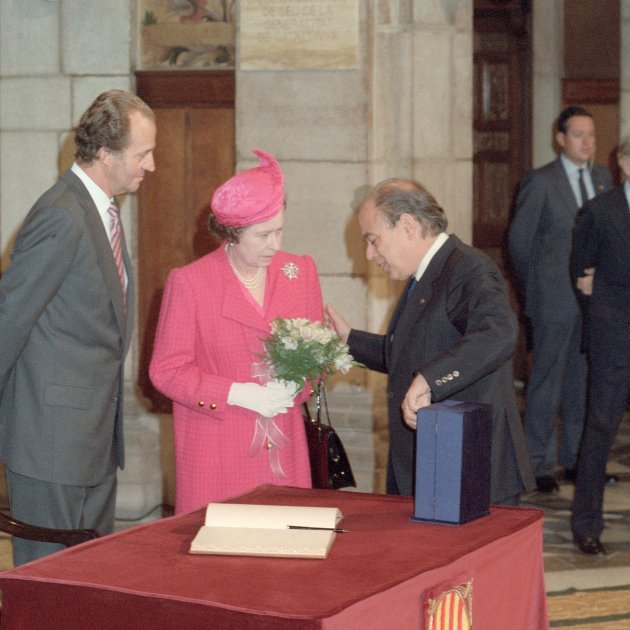Queen Elizabeth II was the first top-level head of state to visit the Palau de la Generalitat, which was a recognition of Catalan self-government. No French president has ever entered the central Barcelona palace that is the seat of the Catalan government. Elizabeth II's visit was part of a stay by the British monarch in Barcelona in 1988, and took place only eight years after the first Catalan elections to the Generalitat, the restored government institution. The Queen met with Catalan president Jordi Pujol, who reminded her that Catalonia and England share Saint George - Sant Jordi to Catalans - as their patron saint. And Pujol gave her a silver statuette of Sant Jordi while reminding her that there are quite a few of them in the palace of the Generalitat. "I myself have that name," he ventured. Small gestures allowed Elizabeth II to intuit that Catalonia was not just one of 17 autonomous communities, but rather, that it resembled Scotland. The Spanish press screwed up their noses, and tried to present the visit of the Queen to the palace of the Generalitat as something quaint, while trying to keep the focus on the modernity that was then seen in the Olympic Games, to be held in the Catalan capital in 1992.
🔴 Elizabeth II dies | Our live coverage (in Catalan)
Elizabeth II, who was escorted by the Spanish monarchs, Juan Carlos and Sofia, was accompanied on the visit by the Duke of Edinburgh, who was the protagonist of an anecdote with the then-general secretary of the Catalan Republican Left, Joan Hortalà. When the Duke of Edinburgh learned that Hortalà was a republican he froze, because in that era, the word was associated with Irish armed violence. "Yes, republican and from a very important party", blurted out the Catalan politician, alluding to the fact that his party had governed Catalonia during the Second Republic of the 1930s.
Then the British monarch crossed the central square of Plaça Sant Jaume, where the then-mayor of Barcelona, Pasqual Maragall, received her and explained to her the murals referring to the city's trade guilds in the city council's 14th century Saló de Cent chamber. Maragall gave him an original of the Royal Mask, a collection of prints from 1764 commemorating the accession to power in Spain of king Carlos III. He was not yet the Catalan sovereignist Maragall he later became.
The day closed, after a visit to the Picasso Museum, with a reception offered by the Queen on board the royal yacht Britannia, anchored in the port of Barcelona.
More recently, when other issues brought the British monarch into the spotlight for Catalans, Elizabeth II displayed an attitude towards Scotland that was like chalk and cheese compared to the Spanish monarchs' attitude towards Catalonia. During the debate over independence and the 2014 Scottish referendum, the British monarch remained scrupulously neutral and made no anti-independence or anti-Scottish comments. This has resulted in several polls indicating that the Scots would like to keep her as queen despite independence, following the model of Canada or Australia. In a poll by The Sunday Times on the continuity of Elizabeth II as head of state, the monarch obtained very favourable results in Scotland in 2021: 47% of respondents wanted a royal head of state, against 35% who preferred an elected head of state, while 18% were not sure.
